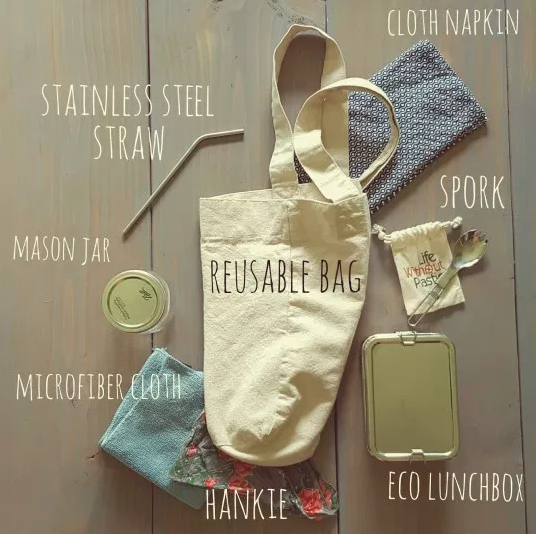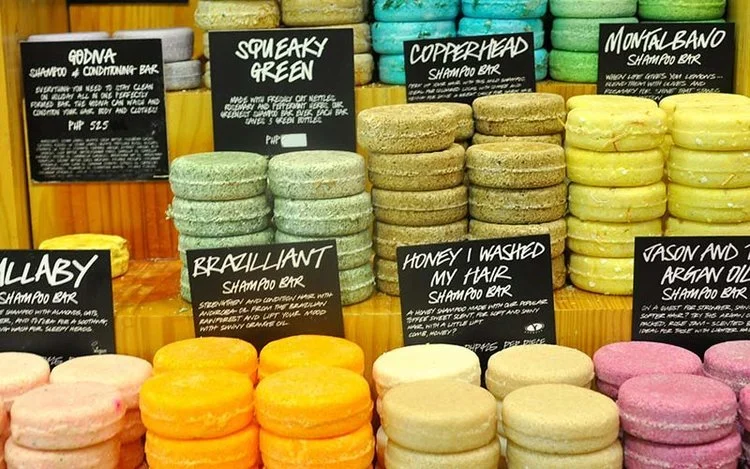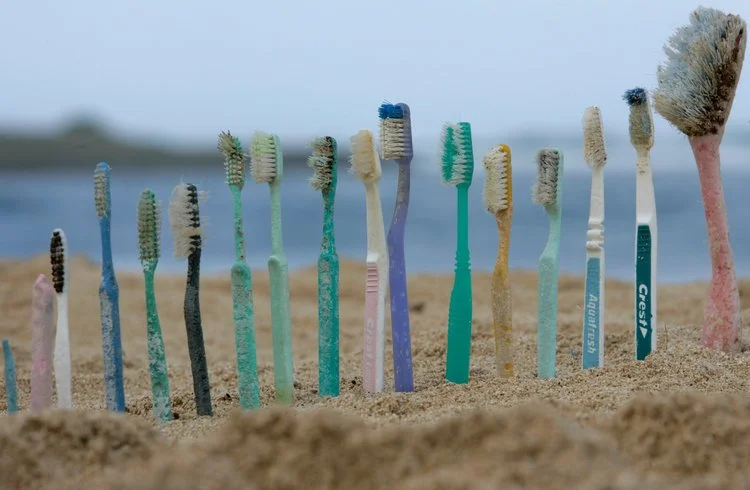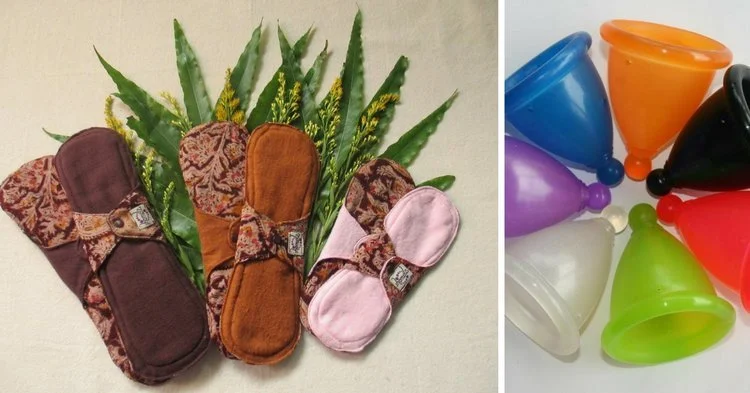10 Simple Tips to Kick Your Plastic Habits
Originally written in March 2019
Some people may argue that individual consumer choices won’t have much of an effect on the outcomes we are seeing on our planet nowadays. To their credit, they are correct; until corporations stop creating so much plastic waste, we won’t see much of a change. However, to get there we must create a behavior change, and by decreasing our plastic consumption we are taking a step toward a more circular economy; i.e. one that stops creating waste. Small steps forward can help people recognize the positive effects of their actions, and begins the conversation with others about why they are choosing to do something different, and encourage them to take a stand against corporations and to push their elected officials to do the same.
One of the most rewarding results in using my voice to share marine conservation issues is when my friends or peers as me for more information on what they can do to help protect the environment. As the plastic problem becomes evermore entangled with our outdoor experiences, the mainstream media has finally started to highlight our plastic addiction.
So this week I was inspired by my friend Marisa to create a post on some super easy ways to decrease plastic consumption.
1. Carry reusable bags
This is typically the first step that individuals take to decrease their plastic use. It’s super tempting to put a couple of items in a plastic bag, but do you really need a bag to carry a few items maybe 100 feet total? A lot of the time I’m normally only carrying my purchases from the store to the car, and then from the car to my house. If I carried them via plastic bag, I would have used it for only a few minutes and then immediately disposed of it, where it would take 1000 years to degrade into microplastics.
One issue most people deal with is leaving their bags at home because they came straight from work or were already out. An easy way to make sure you never forget your bag is to use a tote bag as a purse, or stuff a spare one in your daily bag. Don’t feel like you need to buy new reusable bags either since most of us have a variety of bags already. If you don’t, ask your friends! When I lived in a house of five girls we always had way too many bags to even keep track. But what about storing foods back at home? Check out tip #9.
2. Keep a reusable straw on you at all times, or go without!
After a video of a turtle having a straw pulled out of its nose went viral, there has been a huge wave of support for reusable straws. Many businesses have switched to only giving out straws on request or serving straws made out of stainless steel, glass or silicone. If you are happy to ditch straws altogether, great! Just be sure to always tell your waiter that you do not want a straw. When I don’t automatically request no straw when they ask for my drink order, sometimes the drink comes with one, so try to always remember to tell them! And be sure to collect your reusable straw if you bring your own. I have unfortunately left my reusable straw behind sometimes.
I have witnessed firsthand the need for straws for those who are unable to drink from a cup. This is where the silicone straws come in handy. Check out this post on reusable straws reviews from a disability rights POV.
3. Stop buying bottled drinks, especially plastic water bottles!
First reason why you should stop drinking bottles drink is because most things that end up in a bottle are not very healthy for our bodies! Mammals are 70% water, and when we don’t drink enough of that H2O our bodies and minds suffer. Plant Nanny is a great app to keep you hydrated throughout the day, and will make sure you’re choosing water instead of a sugary or caffeinated drink.
Don’t buy plastic water bottles either. In a recent study investigating over 11 bottled water brands, they found an average of 325 plastic particles for every liter of bottled water and concentrations that were as high as 10,000 plastic particles per liter. At the least, this study helps start the conversation on how our dependence on plastic is affecting our individual health.
4. Bring your own reusable coffee cup for the day.
Most people cannot function without coffee or tea, and with our super busy lives I don’t judge anyone for that! However, instead of grabbing a disposable cup at your coffee store every time you need an energy boost, bring your own mug. One way to remember to do this is to start off your day with a full cup on your way to school, work, or however you start your morning!
RESOURCE: WHAT’S THE BEST REUSABLE COFFEE CUP?
5. MAKE OR INVEST IN A ZERO-WASTE KIT
The easiest way to make your own zero waste kit is by wrapping your silverware (fork, spoon, knife, straw + straw cleaner, chopsticks) with a small towel, and putting it inside either a Mason jar or reusable insulated cup of your choice that you can stick in your purse. This will prevent you from using any plastic silverware, having a place to set your food on, and cup to pour coffee and/or water into.
If you like to leave the house with a drink of some kind, place your utensils and towel in another kind of container that can be used as a to-go box. This prevents you from accidental plastic consumption. I’m guilty of forgetting that to-go boxes are almost always made out of Styrofoam, because they are a convenience our society has grown to accept without a second thought.
Via Zero Waste Nerd
REMEMBER: The first step to change is awareness!
These first give tips are the easiest initial habit to decrease your plastic consumption. The next five may require a little more research and time, but are just as simple.
6. Change out plastic shampoo, conditioner and body soap for bars or refillables.
This is especially important when it comes to traveling and we are all tempted to buy the cute tiny bottles of shampoo, conditioner and body soap. I know I used to always run to the travel-sized section whenever I would go on a trip. One of the best things about plastic awareness is when businesses want to compete to give you as many options as possible when it comes to plastic-free options.
Image: Lush shampoo bars
Personally, I have been using Lush shampoo and conditioner bars while I was in the Philippines. For soap, I had bought some locally handmade bars that were done about two months in. Luckily my roommate Fred had learned how to make soap, and was selling bars at the marine conservation organization I was staying in. He even did a workshop on how to make your own soap! So if you can, see if there are any locally made soaps being sold at your local farmers market, if not, try to choose bar soaps over those in plastic bottles. Most bulk stores offer refillable liquid shampoo and conditioner.
Resources:
Here is a post by Elle about their favorite shampoo bars.
Plaine Products or Pure Earth will send you bottles and refill them when you run out
If you live in the Washington State area check out my friend Krystina’s shop!
7. Zero-waste laundry
Laundry isn’t necessarily the place where you think about reducing your plastic. However, many of the synthetic fibers our closed are made up from often shed in the wash cycles and go into our waterways. While its best to own non-synthetic fabrics such as hemp, cotton, or linen, fashion waste is a huge issue, and I encourage you to thrift for clothes rather than buying brand new. If you do buy new, I would recommend going for a sustainable brand - fabric, manufacturing ethics, and their carbon footprint. However, while we still do wear plastic and synthetic clothing, you’ve got two main options: the Cora Ball or Guppy Friend. The Guppy Friend seems to catch more microfibers, and is easy to toss your clothes into when you’ve got a smaller load. Both require you to scrape off the synthetic fibers once visible into the bin. A more expensive option is to invest in a laundry filter that can catch up to 90% of microfibers, though there is some debate on its effectiveness on a grander scale.
Other options to reduce plastic and waste in the laundry are to buy detergent strips, wool dryer balls, or just hang dry your clothes to reduce energy consumption.
8. SWITCH OUT YOUR PLASTIC TOOTHBRUSH FOR BAMBOO
It’s wild to think about the number of toothbrushes I picked up when I was interning at Marine Conservation Philippines. Every beach clean would have at least 5 plastic toothbrushes (Laura, we still need a data section for toothbrushes!). If you use a standard toothbrush, it will last around three months and then you’ll have to trade it out for a new one. Bamboo toothbrushes last the same amount of time, but their handles will biodegrade into the soil, unlike plastic.
Via Greenpeace
There has been some debate about if bamboo toothbrush bristles are fully biodegradable and/or vegan, so to be sure, take out the bristles before composting or disposing of the bamboo handles in a responsible way. When my bamboo toothbrush was done, the bristles started falling out on their own, so it’s usually not difficult to take the rest of them out.
Resource: Sustainable electric toothbrush options
9. Learn to use bulk bins and shop local
Bulk bin shopping is grocery shopping of the future! Instead of buying individual plastic wrapped cases of various items (baking soda, rice, oats, raisins, flour, sugar, peanut butter, shampoo…), you bring your own containers and fill them up at the store. The key to bulk bin shopping is researching your store beforehand, and being sure to tare the weights of your container so you’re only paying for the product itself. Here’s a video blog on zero-waste grocery shopping by my friend Krystina (who introduced me to the zero-waste lifestyle!) designed for beginners to the lifestyle. Be sure to also invest in smaller produce bags that you can store your vegetables in at home.
RESOURCE: HOW TO STORE PRODUCE WITHOUT PLASTIC
IG: Waste Free Planet
Shopping at your local farmers market not only supports your neighbors and fellow citizens, but is also better for the Earth. Transport is a huge carbon cost when it comes to the the globalization of food and the convenience of being able to eat any type of produce at any time of the year. Local farmers will only sell seasonal foods, which decreases the amount of mono-cropping and pesticide/insecticide use. They also do not have plastic stickers on fruits, and don’t always put more fragile fruit in plastic containers. If they do, see if you can rinse and return the plastic container for seller to re-use. Individuals tend to be much more helpful and flexible than employees to a huge corporation.
Via Dinnertime
10. Start using plastic-free feminine hygiene options
For my ladies out there: it is so gross and disheartening to pick up sanitary pads off of reef to reveal a bleached or dead coral underneath. Typical tampons are also filled with bleaching chemicals that cannot be healthy for our most sensitive body part! They also always come in plastic applicators, which is another no-no for a zero-waste lifestyle. You save money by making a single purchase, and then being able to use it over and over and over again. Tampons are expensive, and so are pads! Although a cup or reusable pads can be a bit expensive, again, it’s a one-time purchase.
I use a menstrual cup and it changed my life!! After getting used to taking it in and out a few times, it’s so much easier than worrying about a leaking tampon or the discomfort of a sanitary pad in your underwear. A menstrual cup can be used for up to 12 hours before dumping it out and putting it back in! No more worrying about the 4-6 hours and the possible Toxic Shock Syndrome. If you prefer sanitary pads, invest in reusable ones!
So there you have it! 10 easy ways to change your plastic habits. Below I have listed some instagrams that are product resources + educate about zero-waste lifestyle and the effects of plastic. If you check out the Resources tab under Luminaries, I have websites that focus on low-impact lifestyles and that can help you on your zero-waste journey. Let me know what you think about this post by commenting below, and please share this article if you found it to be helpful! Thank you for reading and have an amazing rest of your day.
INSTAGRAMS FOR INFORMATION:
@zero.waste.collective
@plasticfreemermaid
@4ocean
@take3forthesea
@adropintheoceanshop
@wastefreeplanet
INSTAGRAMS FOR PRODUCTS:
@lifewithoutplastic
@stasherbag
@brushwithbamboo
@zerowastestore







